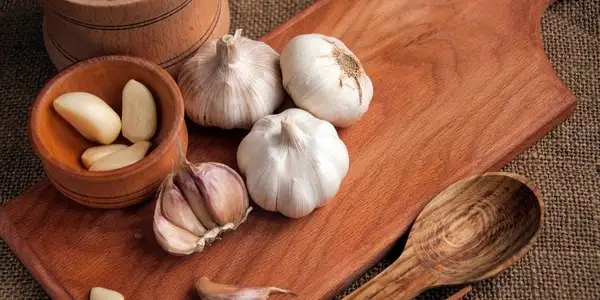
Fresh garlic can add a spicy, pungent flavor to just about any dish. Whether you're making stir-fries or roasted green beans, it's always helpful to have some...
Read more


|
Nutrient |
Per 100 g |
|---|---|
|
Calorific value |
226 kJ |
|
Energy |
53 kcal |
|
Carbohydrates |
10 g |
|
Protein |
0 g |
|
Fat |
0 g |
The food Tangerine (fresh) is composed of the following macronutrients.
Tangerines are a healthy food. Here are some advantages:
Mandarins are small, juicy oranges grown in many parts of the world. They are smaller and rounder than regular oranges and their peel is easily removed. There are many different types of mandarins, such as clemenules, satsumas, tangerines and cuties.
They have a sweet and sour taste and are less acidic than ordinary oranges. They are often eaten raw, but can also be made into jams, marmalades, juices and desserts.
They are available year-round, but the main harvest season varies by variety and growing region. In the U.S., the main harvest season for mandarins is between November and April.
Mandarins also make a good snack on the go.
How are tangerines grown and harvested?
Mandarins grow in mild climates such as Southeast Asia, China, Spain, the United States and South America. The trees grow to a height of about 6-8 m and bear fruit after 3-4 years. The harvest time varies depending on the variety, but most mandarins are harvested from October to April.
What is the best way to store tangerines to keep them fresh?
Mandarins should be stored at room temperature to maintain their freshness. They should not be stored near apples, bananas or other fruits, as these fruits secrete ethylene, which accelerates the ripening of tangerines.
Can tangerines be stored in the refrigerator?
Tangerines should not be stored in the refrigerator because the cold air can damage the skin of the fruit and affect the taste. If the tangerines are already peeled or cut, they should be stored in the refrigerator and consumed within 2-3 days.
In which regions are most mandarins produced?
The regions where most mandarins are produced vary according to season and variety. However, some countries are among the largest mandarin producers in the world: China is the largest mandarin producer in the world, producing over 20 million tons per year. Spain is a major mandarin producer in Europe, producing mainly the Clemenules and Ortaniques varieties. Brazil is an important mandarin producer in South America, producing mainly the Pera and Murcott varieties. In the U.S., mandarins are grown mainly in Florida, California and Texas and produce mainly the Satsuma and Honey varieties. Greece is an important mandarin producer in Europe, producing mainly the Nadorcott and Afourer varieties. Italy is another important mandarin producer in Europe and produces mainly the Tango and Ortanique varieties. Mandarins are also grown in many other regions of the world, including Japan, Morocco, Egypt, Israel, South Africa, and Australia.
What is the seasonal availability of mandarins?
The seasonal availability of mandarins varies by variety and growing region. However, most mandarins are harvested during the winter months. In the U.S., the peak harvest season for mandarins is usually between November and April. Some of the most common tangerine varieties and their harvest times are Satsuma: harvest between September and January. Clementine: Harvest from November to January. Tangerine: Harvest from November to January. Tangerine (honey): Harvest from January to March. Tangerine (Murcott): Harvest from February to April. Tangerine (Ortanique): Harvest from January to March.
I love this app! The food is super varied and filling (and soo delicious!). With one purchase I have the ingredients for a whole week together, thanks to the shopping list. The ingredients are also readily available and not really expensive.
Nicole — App User
The first app in the field of nutrition tips that really convinces me. Updates get minor issues out of the way and new features are added all the time. Top!
Unknown user — App User
ave already tried many nutrition apps but here it is really great and you save a lot of time because you do not have to enter all the meals yourself! 👍👏
Mareen — App User
I don't usually rate apps but this one has to be rated.... I have never had such a great app just fits everything.... The nutrition plans are just absolutely awesome just everything is awesome many many thanks
Mareen — App User
This app is an excellent support for healthy eating even with little time and effort! Super recipes are also included. Highly recommended!
Lennert — App User